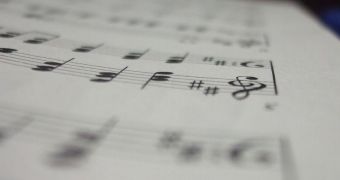A music therapist now from the University of Haifa proved recently that music therapy can assist children's rehabilitation process toward language acquisition, especially in toddlers who have just undergone a cochlear-transplant procedure. Getting used to the artificial device is very difficult, and even more so for small children. Therefore, any method that can promote speech acquisition and learning is welcomed, analysts say. If they remain unable to speak, children will have a more difficult time integrating in society over the next critical years, ScienceDaily reports.
“Music comprises various elements that are also components of language and therefore as a non-verbal form of communication is suitable for communication with these children, when they are still unable to use language. Communicative interactions, especially those initiated by the toddlers, are critical in the development of normal communication, as they are prerequisites for developing and acquiring language,” UH expert Dr. Dikla Kerem, who has been the leader of the new research, says. The details related to the work were presented in a conference entitled “Brain, Therapy and Crafts.” Kerem's study was done under an international PhD program at the Aalborg University in Denmrak, under the supervision of professor Tony Wigram, the head of PhD studies at AU.
Though it may seem a bit rough, cochlear implants are the best chance children born with hearing defects have. They also tend to register a 90-percent recovery rate if they get a cochlear implant, experts say. But the thing about these children is that they never heard sounds before the operations. Therefore, they first need to get accustomed to the world of noises around them, before finally learning how to speak themselves. This puts them at a considerable disadvantage when compared with healthy children, who begin to hear and get accustomed to the world outside while since in the womb.
“Music can constitute the bridge between the quiet world that the child knew and the new world of sounds that has been unfolded following the operation. It is also important that the parents and staff learn the best way to expose these children to music, the use of music for communication and the importance of the therapist's undirected approach (which enhanced the children's communication in music therapy and in play to a greater degree than in the directed one). Music therapy is gradually penetrating the field of rehabilitation, but there is still a lot of work to be done in improving awareness of this important area,” Kerem concludes.

 14 DAY TRIAL //
14 DAY TRIAL //